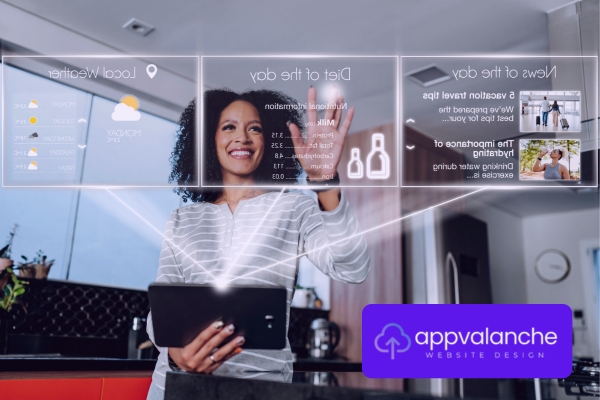Looking to boost your site visits? Drive more traffic with these 5 effective website strategies that actually work.
Welcome to a Traffic-Boosting Journey
In the vast digital landscape, the ability to drive traffic to your website is paramount. It’s a journey filled with strategy, creativity, and constant evolution. Today, we’re embarking on this journey together to uncover the secrets of boosting your website’s traffic effectively and sustainably.
Why Driving More Traffic Matters
Driving more traffic to your website isn’t just about numbers; it’s about connecting with your audience, expanding your reach, and ultimately growing your business. Increased traffic leads to higher engagement, more leads, and better conversion rates. In the digital age, visibility equals opportunity.
Setting Goals for Increased Website Traffic
Setting clear, attainable goals is the first step in your traffic-boosting journey. Whether it’s increasing daily visitors, improving your bounce rate, or boosting sales, having defined objectives will guide your strategies and measure your success.

Understanding Website Traffic
What is Website Traffic?
Website traffic refers to the flow of visitors to your website. It encompasses the number of visitors, the pages they view, the duration of their visit, and the actions they take. Understanding these metrics is crucial for assessing the effectiveness of your online presence.
Different Types of Website Traffic
Not all traffic is created equal. Website traffic can be categorized into direct, organic, referral, and social traffic. Direct traffic comes from users who type your URL directly into their browser. Organic traffic originates from search engines. Referral traffic comes from other websites, and social traffic is driven by social media platforms.
The Importance of Quality Traffic Over Quantity
While having a high volume of traffic is desirable, the quality of that traffic is even more critical. Quality traffic consists of visitors who are genuinely interested in your content, products, or services. They are more likely to engage, convert, and become loyal customers.
Follow For daily tips & tricks
- Learn more about Website Development.
- Learn more about SEO & Digital Marketing.
- Top Rated Website Design in Wales.
- Visit my LinkedIn for more website design tips.
- Visit my Facebook.
Strategy 1: Search Engine Optimization (SEO)
Introduction to SEO for Traffic Growth
Search Engine Optimization (SEO) is the art and science of optimizing your website to rank higher in search engine results. A higher ranking means more visibility and, consequently, more traffic.
On-Page SEO Tactics for Better Visibility
On-page SEO involves optimizing individual web pages to rank higher and earn more relevant traffic. Key tactics include optimizing title tags, meta descriptions, headers, and content with relevant keywords. Ensuring your website is mobile-friendly and has a fast loading speed are also crucial.
Off-Page SEO: Building Backlinks and Authority
Off-page SEO focuses on increasing your website’s authority through external means. Building high-quality backlinks from reputable websites signals to search engines that your site is a valuable resource. Guest blogging, influencer partnerships, and engaging in online communities can help build these links.
Using Keyword Research to Drive Traffic
Keyword research involves identifying the terms and phrases your target audience uses to search for products, services, or information. Using tools like Google Keyword Planner and SEMrush, you can find high-volume, low-competition keywords to optimize your content and drive targeted traffic.
SEO Tools and Resources for Beginners
Several tools can simplify SEO for beginners. Google Analytics, Moz, and Ahrefs offer insights into your website’s performance and provide actionable data to improve your SEO strategy. These tools help you track keyword rankings, backlinks, and site health.
Free SEO Tools:
Paid SEO Tools:

Strategy 2: Content Marketing
Creating High-Quality, Engaging Content
Content is the cornerstone of any traffic-driving strategy. High-quality, engaging content attracts and retains visitors. Focus on creating content that addresses your audience’s needs, answers their questions, and provides value.
The Power of Blogging for Traffic Generation
Blogging is a powerful tool for driving traffic. Regularly publishing informative and relevant blog posts helps you rank for various keywords and topics. It also positions you as an authority in your niche, encouraging repeat visits and shares.
Leveraging Video Content to Attract Visitors
Video content is highly engaging and can drive significant traffic. Creating tutorials, product reviews, and behind-the-scenes videos can attract a broader audience. Platforms like YouTube and Vimeo provide additional avenues for visibility.
Repurposing Content for Maximum Reach
Repurposing content involves taking existing content and presenting it in different formats. For example, a blog post can be turned into a video, infographic, or social media post. This maximizes your reach and caters to different audience preferences.
Guest Blogging and Content Collaboration
Guest blogging on reputable sites can drive traffic back to your website. Collaborating with other content creators also expands your reach. These strategies help you tap into new audiences and build valuable backlinks.
Free Content Marketing Tools:
Paid Content Marketing Tools:

Strategy 3: Social Media Marketing
Choosing the Right Social Media Platforms
Not all social media platforms are created equal. Choosing the right platforms depends on where your target audience spends their time. Whether it’s Facebook, Instagram, LinkedIn, or Twitter, focus on the platforms that offer the best return on investment for your niche.
Creating Shareable Social Media Content
Creating content that resonates with your audience is key to social media success. Use captivating visuals, compelling copy, and interactive elements like polls and quizzes to encourage sharing and engagement.
Using Hashtags to Increase Reach
Hashtags categorize your content and make it discoverable to a broader audience. Research trending and relevant hashtags in your industry and use them strategically in your posts to increase visibility.
Engaging with Followers and Building a Community
Social media is not just a broadcasting tool; it’s a platform for engagement. Respond to comments, join conversations, and show appreciation for your followers. Building a community fosters loyalty and encourages repeat visits.
Paid Social Media Advertising for Traffic Boosts
Paid advertising on social media can quickly drive traffic to your website. Platforms like Facebook and Instagram offer targeted advertising options that allow you to reach specific demographics, interests, and behaviors.
Free Social Media Tools:
Paid Social Media Tools:

Strategy 4: Email Marketing
Building and Growing Your Email List
An email list is a direct line to your audience. Build your list by offering valuable incentives like eBooks, discounts, or exclusive content. Ensure your signup forms are easy to find and fill out.
Crafting Compelling Email Campaigns
Effective email campaigns capture your audience’s attention and drive action. Craft compelling subject lines, personalize your emails, and include clear calls to action to encourage clicks.
Segmenting Your Audience for Targeted Emails
Segmentation involves dividing your email list into smaller groups based on specific criteria like behavior, demographics, or past interactions. Targeted emails are more relevant and effective, leading to higher engagement and traffic.
Using Automation to Maintain Consistent Traffic
Email automation allows you to send timely and relevant emails without manual effort. Set up automated workflows for welcome series, abandoned cart reminders, and follow-up emails to keep your audience engaged.
Analyzing Email Campaign Performance
Tracking the performance of your email campaigns helps you understand what works and what doesn’t. Use metrics like open rates, click-through rates, and conversion rates to refine your strategies and drive more traffic.
Free Email Marketing Tools:
Paid Email Marketing Tools:

Strategy 5: Paid Advertising
Overview of Paid Advertising Options
Paid advertising can provide a significant traffic boost. Options include pay-per-click (PPC) ads on search engines, display ads, and social media ads. Each platform offers unique advantages depending on your goals.
Google Ads: Driving Traffic with PPC
Google Ads allows you to bid on keywords and display ads to users searching for related terms. This can drive highly targeted traffic to your website, especially for high-intent keywords.
Social Media Ads: Facebook, Instagram, and Beyond
Social media ads offer robust targeting options, allowing you to reach specific audiences based on interests, behaviors, and demographics. Platforms like Facebook, Instagram, LinkedIn, and Twitter offer various ad formats to suit your needs.
Setting a Budget and Measuring ROI
Setting a realistic budget for paid advertising is crucial. Monitor your spending and measure return on investment (ROI) to ensure your campaigns are cost-effective. Adjust your strategies based on performance data to maximize your ROI.
Tips for Creating Effective Ad Campaigns
Creating effective ad campaigns requires a blend of creativity and strategy. Use compelling visuals, clear messaging, and strong calls to action. A/B testing different elements of your ads can help you determine what resonates best with your audience.
Free Advertising Tools:
Paid Advertising Tools:
Integrating Multiple Strategies
Combining SEO and Content Marketing
SEO and content marketing go hand in hand. Create high-quality content optimized for search engines to attract organic traffic. Use keyword research to guide your content creation and ensure it aligns with what your audience is searching for.
Using Social Media to Amplify Content
Social media is a powerful tool to amplify your content. Share your blog posts, videos, and other content across your social channels to reach a broader audience. Encourage your followers to share your content to extend your reach even further.
Cross-Promoting Through Email Marketing
Email marketing is an excellent way to promote your content. Include links to your latest blog posts, videos, and other content in your email campaigns. This drives traffic back to your website and keeps your audience engaged.
Leveraging Paid Ads for Quick Traffic Surges
While organic strategies build long-term traffic, paid ads can provide quick traffic surges. Use paid advertising to promote new content, products, or special offers. This can drive immediate traffic while your organic efforts take root.
Measuring Success
Setting Up Google Analytics
Google Analytics is an essential tool for tracking your website’s performance. Set it up to monitor key metrics like traffic sources, user behavior, and conversion rates. This data provides valuable insights into the effectiveness of your strategies.
Key Metrics to Track for Website Traffic
Track metrics such as page views, unique visitors, bounce rate, and average session duration. Understanding these metrics helps you gauge your website’s performance and identify areas for improvement.
Analyzing Traffic Sources and Visitor Behavior
Analyze where your traffic is coming from and how visitors interact with your site. This helps you understand which strategies are driving traffic and which areas need adjustment. Use this data to refine your approaches and optimize performance.
Adjusting Strategies Based on Data Insights
Regularly review your analytics to identify trends and patterns. Use the data to identify potential causes and experiment with new strategies. Refresh your content, explore new keywords, and invest in paid advertising to jumpstart traffic growth.
Overcoming Common Challenges
Dealing with Traffic Plateaus
Traffic plateaus can be frustrating, but they’re a natural part of growth. Analyze your data to identify potential causes and experiment with new strategies. Refresh your content, explore new keywords, and invest in paid advertising to jumpstart traffic growth.
Managing a Tight Budget
Driving traffic on a tight budget requires creativity and resourcefulness. Focus on cost-effective strategies like SEO, content marketing, and social media engagement. Leverage free tools and resources to maximize your efforts.
Staying Updated with Algorithm Changes
Search engines and social media algorithms are constantly evolving. Stay informed about changes and adjust your strategies accordingly. Follow industry blogs, participate in webinars, and join online communities to stay ahead of the curve.
Conclusion
Recap of the 5 Effective Website Strategies
We’ve explored five powerful strategies to drive more traffic to your website: SEO, content marketing, social media marketing, email marketing, and paid advertising. Each strategy offers unique benefits and, when combined, can significantly boost your online presence.
Encouragement to Start Implementing Today
The journey to increased website traffic starts with a single step. Begin implementing these strategies today, and watch as your traffic grows. Remember, consistency and persistence are key to long-term success.
Final Tips for Sustained Traffic Growth
Keep your content fresh, engage with your audience, and stay adaptable. Monitor your progress, make data-driven adjustments, and never stop learning. Sustained traffic growth is a marathon, not a sprint.
Inviting Readers to Share Their Success Stories
We’d love to hear about your successes! Share your traffic-boosting stories in the comments below. Your experiences can inspire and guide others on their journey.
Encouraging Comments and Questions
Have questions or need advice? Drop a comment, and we’ll be happy to help. Your input makes this community stronger.
Providing Links to Additional Resources
For more insights and tips, check out our other resources and guides. Explore our blog for deeper dives into each strategy and stay updated with the latest trends in traffic generation.
FOLLOW FOR DAILY TRICKS & TIPS
- Learn more about Website Development.
- Learn more about SEO & Digital Marketing.
- Top Rated Website Design in Wales.
- Visit my LinkedIn for more website design tips.
- Visit my Facebook.




